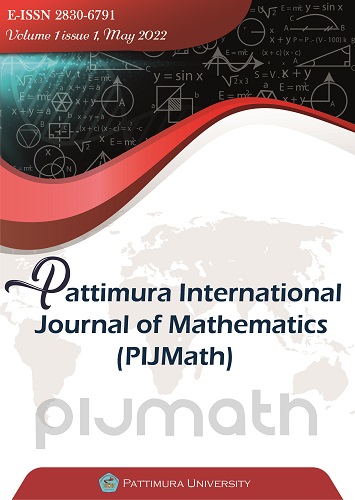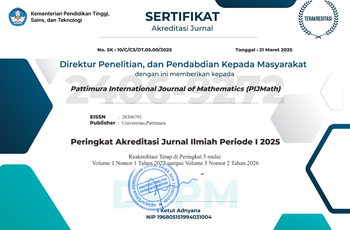Value at Risk Prediction for the GJR-GARCH Aggregation Model
Abstract
Volatility is the level of risk faced due to price fluctuations. The greater the volatility brings, the greater the risk. We need a measure such as Value at Risk (VaR) and volatility modeling to overcome this. The most frequently used volatility model in the financial sector is GARCH. However, this model is still unable to accommodate the asymmetric nature, so the GJR-GARCH model was developed. In addition, this study also used aggregation returns with two assets in them. This study aimed to determine the VaR prediction for the GJR-GARCH(1.1) aggregation model and its comparison with the GARCH(1.1) aggregation model. The results obtained indicate that the prediction of volatility using the GJR-GARCH(1.1) aggregation model is more accurate than the GACRH(1.1) aggregation model because it has a correct VaR value that is close to the given confidence level.
Downloads
References
R. S. Tsay, “Analysis of Financial Time Series,” Wiley Series in Probability and Statistics, Aug. 2005.
P. Posedel, “Properties and estimation of GARCH(1,1) model,” Advances in Methodology and Statistics, vol. 2, no. 2, Jul. 2005.
T. Bollerslev, “Generalized autoregressive conditional heteroskedasticity,” Journal of Econometrics, vol. 31, no. 3, pp. 307–327, Apr. 1986.
L. R. GLOSTEN, R. JAGANNATHAN, and D. E. RUNKLE, “On the Relation between the Expected Value and the Volatility of the Nominal Excess Return on Stocks,” The Journal of Finance, vol. 48, no. 5, pp. 1779–1801, Dec. 1993.
M. Asai, and M. McAleer, “Asymmetry and leverage in stochastic volatility models: an exposition,” MODSIM 2005 International Congress on Modelling and Simulation, MSSANZ, Melbourne, Australia, pp. 2283-2287, Dec. 2005.
L. H. Ederington and W. Guan, “How asymmetric is U.S. stock market volatility?,” Journal of Financial Markets, vol. 13, no. 2, pp. 225–248, May 2010.
D. Ardia, K. Bluteau, K. Boudt, and L. Catania, “Forecasting risk with Markov-switching GARCH models:A large-scale performance study,” International Journal of Forecasting, vol. 34, no. 4, pp. 733–747, Oct. 2018.
R. F. Engle and A. J. Patton, “What good is a volatility model?,” Quantitative Finance, vol. 1, no. 2, pp. 237–245, Feb. 2001.
The author(s) hold the copyright of the published article without restriction. This policy means that the journal allows the author(s) to hold and retain publishing rights without restrictions.
The author(s) holds the copyright of published articles without limitation. This policy means that the journal allows the author to hold and retain publishing rights without restrictions. Journal editors are given the copyright to publish articles in according to agreement signed by the author and also include statement of originality of the article


.jpg)












 This work is licensed under a
This work is licensed under a 